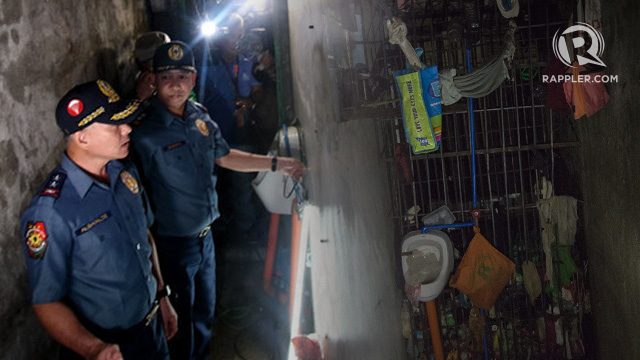SUMMARY
This is AI generated summarization, which may have errors. For context, always refer to the full article.

The secret police cell discovered in the Raxabago Police precinct of the Manila Police District is, indeed, a new low in the standards of the Philippine penal system.
We all know that detention centers are overcrowded, ill-maintained, and poorly funded. The Philippine National Police does not even have a budget for food, clothing, and other basic provisions for the detainees, who languish in these facilities for an average of 3 weeks before they are transferred to the Bureau of Jail Management and Penology (BJMP) or provincial jails.
However, this is my first time, after doing research in this area for the past 22 years, to have heard of such secret medieval-age type of cells.
There are two perspectives in explaining the occurrence of the secret cell.
One is the structural deficiency perspective: This type of cells occur due to the lack of facilities and space. Most police stations do not have the resources to build new cells. With the influx of new drug arrestees, all possible spaces are transformed into living spaces.
A dungeon-like space can thus be converted into a detention cell to maximize space. Such coping mechanisms had been utilized by police precinct commanders to justify their behaviors. They are doing this with a “presumption of regularity”. I believe this “justification” will be utilized by the precinct commander to absolve himself from responsibility.
The other perspective is the cultural perspective: Given the structural deficits (argument above), police officers can utilize different coping mechanisms to augment their capacities. For example, due to lack of operational resources, police officers spend their own money when they investigate cases. In order to feed the inmates they arrested, they draw from their own pockets.
The structural deficiencies thus induce police officers to indulge in resource mobilization and money-making endeavors. Some of the resource mobilization activities are legal, such as solicitations from the local governments and civil society organizations. Some money-making activities, however, are unethical, such as asking money (pang-gasolina) from complainants to fast-track to investigation of cases. And some activities are downright illegal and corrupt, such us, extortion, palit-ulo, bribery, etc. Police officers can utilize the structural deficits as justifications to their behaviors, legal or corrupt.
In this case, the secret detention cell was utilized to extort money from the detainees but under the guise of a coping mechanism to cell overcrowding.

The Commission on Human Rights and the PNP should investigate systematically and pursue both perspectives in establishing the accountability of the police officers. This is a tricky issue and one should not immediately jump to hasty conclusions. (READ: #AnimatED: PNP’s skeletons behind a bookshelf)
More bizarre practices
It becomes even more politicized in the context of the current drug war, as police officers may utilize the “drug war” as justifications to the punitive actions against drug peddlers. If heads were to roll, it should be after a thorough investigation that establishes the moral guilt of the offending police officers.
Egregious as it is, this should open the eyes of many Filipinos to the current state of the detention centers in the Philippines.
Many more bizarre practices are going on which are undocumented and which will shock our conscience once they are discovered. (Thanks to the CHR). This happens as almost all our detention facilities are overcrowded, ill-maintained, and under-resourced, made even more constrained by the current war on drugs. These deficiencies eventually provide justifications for our police officers to indulge in corrupt practices.
The solution, from a policy perspective, is two-pronged: address the structural deficits and confront the corrupt values it had espoused. For example, local governments must pour resources for the maintenance of the police precinct facilities. Sensitivity trainings must be conducted to alert our officers of their engagement in corrupt behaviors which had become acceptable way of doing things.
As peace loving Filipinos, we should do both. – Rappler.com
Raymund E. Narag attained his PhD degree from the Michigan State University School of Criminal Justice. He is assistant professor at the Department of Criminology and Criminal Justice of the Southern Illinois University Carbondale. Dr. Narag’s research interest delves on understanding community-based processes that mitigate the proliferation of crime and delinquency.
Add a comment
How does this make you feel?
There are no comments yet. Add your comment to start the conversation.